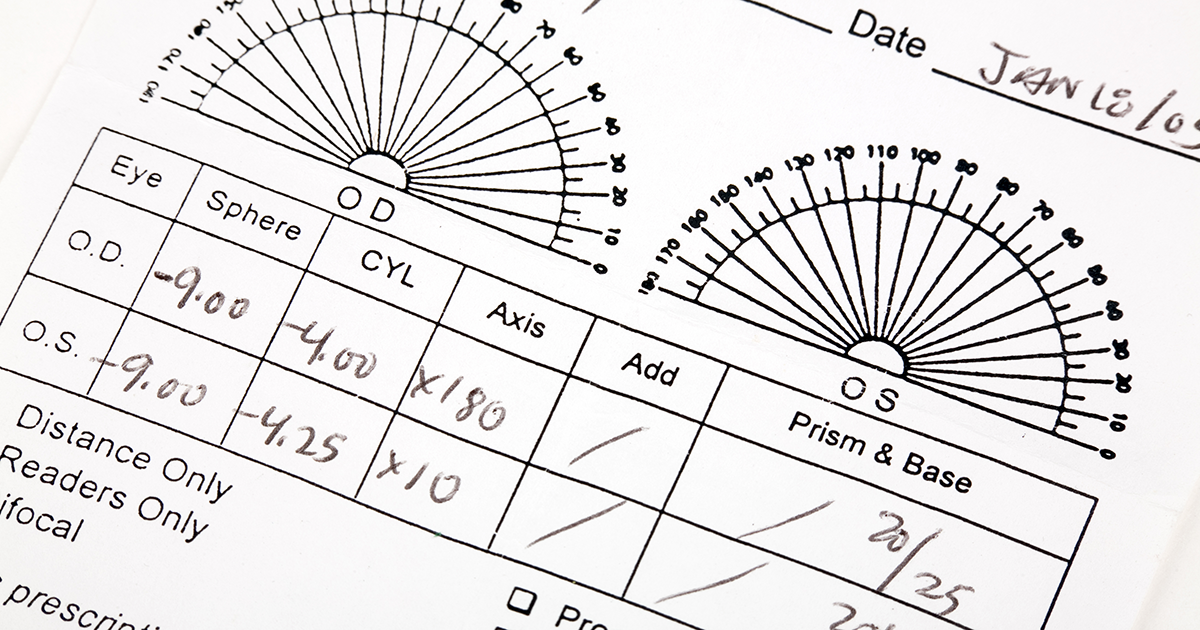Author: Austin Tang

Mr. Smith who you remember just purchased his $1000 multifocals just a couple of weeks ago comes in and tells you that he just can’t see well out of his right eye… that things just aren’t as crisp and that something’s just not right but he can’t pinpoint it. You vert the glasses and the cyl in each eye has been made correct to the nearest degree: Rx: +1.00/-0.75x66 with a +2.25 Add. Then you go to check the heights and PDs and nothing’s out of line.
Then you remember you actually never saw him; he had brought in his prescription from down the road. You have a closer look at the prescription and its from 6 months ago. Mr Smith says he could see even better out of his previous glasses, so you take those and vert them and see if there’s any difference. The vert reads +1.00/-0.75x 166with an add of +2.25. Axis 166?!
Patients have the right to have their prescriptions dispensed wherever they choose, whether that is where they’ve just had their eyes tested by yourself or whether it’s elsewhere. However, it is often more difficult to resolve any spectacle related problems when prescribing and dispensing are separated. In the case of yourself and Mr Smith, you’ve figured that there well and truly could have been a typo in that outside prescription, but the lenses that you’ve ordered have been made to the prescription that has been presented to you by his optometrist. Or it could have been that his prescription could have changed since his last refraction? You do a quick refraction to get more information and you get +1.00/-0.75x170 and your thoughts on a possible typo heighten.
There are many factors at play in this situation. There can be both prescription and dispensing errors. Difficulties can become more apparent in cases of complicated prescriptions such as those involving high prescriptions, high degrees of astigmatism, prismatic correction, anisometropia and paediatric dispensing. Even aspects such as frame and lens selection could play a large part in a patient’s visual experience.
So who’s responsible in this situation? It can be a grey area. One could argue that the given script was incorrect and it should be the prescriber at fault, since the glasses were made exact to that prescription. However, the prescriber could also argue that they do not take liability of the prescription if it is dispensed elsewhere.
Some strategies to overcome these situations including educating the patient on the potential difficulties of separate prescribing and dispensing, particularly if they have a complicated prescription or lens form. It can also be suitable to include a disclaimer when releasing prescriptions that states that there is no liability taken on the prescription if taken elsewhere. A refraction check could also be carried out prior to dispensing if the prescription is not recent or if the patient feels that there has been a visual change since the last prescription. Simple steps such as trial framing an outside prescription could also help with reducing such situations.